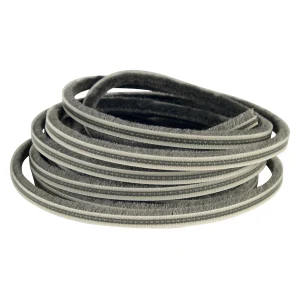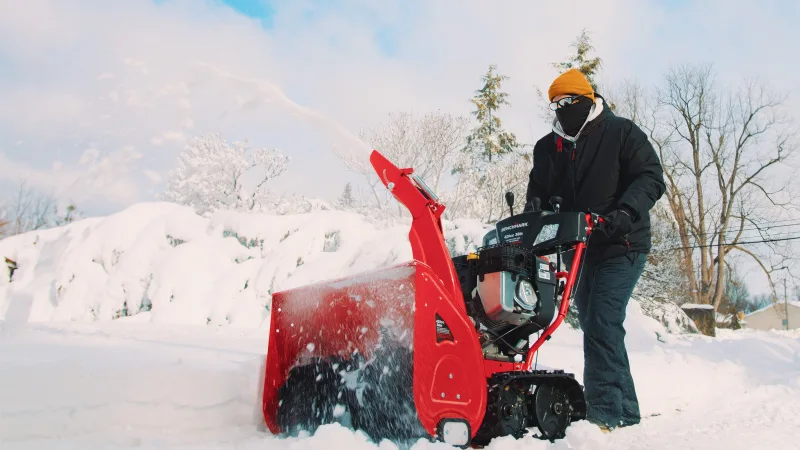Here's How to Prepare Your Home for Ice Storms
Ice storms can wreak havoc between November and April each year.
Caused by freezing rain amassing on buildings, trees, cars and other surfaces, heavy ice deposits can topple trees, down power lines, collapse roofs and worse. Preparation is key to protecting your home and family from the worst of winter. Here’s what you need to know.

Ice Damage Prevention
A good ice storm damage prevention strategy includes long-term and emergency planning.
Long-term Planning
Protecting your home against extreme weather, including ice storms, requires home improvements, weatherproofing and landscaping maintenance. Some of these updates and upgrades are straightforward DIY tasks, while others may require professional assistance.


TIP: You don’t have to tackle your winter damage prevention action list all at once. Prioritize upgrades based on need and budget.
Home Protection Products
Gear up with essential equipment and supplies to help prepare your home for extreme winter weather and to help you react swiftly to emergency situations.
Preparing your home for ice storms will also help it stand up to other types of winter weather such as extreme cold.
TIP: Make a fall tune-up part of your pre-winter auto-care routine. Keeping your vehicle in good working order — and equipped with winter tires — provides peace of mind.
Emergency Preparedness
Here’s What to Do if There is a Winter Storm Watch or Warning
Severe winter weather, including ice storms, typically do not require evacuation — in most cases, it’s safest to stay at home. You’ll typically have 12 to 24 hours to prepare your home after a winter storm watch or warning. Here’s what to do.

TIP: Portable gas heaters, camp stoves and certain types of propane heaters are unsafe for indoor use. Using them can lead to potentially fatal carbon monoxide poisoning. If you use a heating device, check that it is rated for indoor use.
Emergency Car Kit Essentials
Prepare Your Vehicle for Extreme Winter Weather

TIP: Schedule vehicle maintenance at the start of the season; this includes switching to winter tires, which provide superior traction in wet, icy, slushy and cold conditions.
Ice Damage Prevention
A good ice storm damage prevention strategy includes long-term and emergency planning.
Long-term Planning
Protecting your home against extreme weather, including ice storms, requires home improvements, weatherproofing and landscaping maintenance. Some of these updates and upgrades are straightforward DIY tasks, while others may require professional assistance.


TIP: You don’t have to tackle your winter damage prevention action list all at once. Prioritize upgrades based on need and budget.
Home Protection Products
Gear up with essential equipment and supplies to help prepare your home for extreme winter weather and to help you react swiftly to emergency situations.
Preparing your home for ice storms will also help it stand up to other types of winter weather such as extreme cold.
TIP: Make a fall tune-up part of your pre-winter auto-care routine. Keeping your vehicle in good working order — and equipped with winter tires — provides peace of mind.
Emergency Preparedness
Here’s What to Do if There is a Winter Storm Watch or Warning
Severe winter weather, including ice storms, typically do not require evacuation — in most cases, it’s safest to stay at home. You’ll typically have 12 to 24 hours to prepare your home after a winter storm watch or warning. Here’s what to do.

TIP: Portable gas heaters, camp stoves and certain types of propane heaters are unsafe for indoor use. Using them can lead to potentially fatal carbon monoxide poisoning. If you use a heating device, check that it is rated for indoor use.
Emergency Car Kit Essentials
Prepare Your Vehicle for Extreme Winter Weather

TIP: Schedule vehicle maintenance at the start of the season; this includes switching to winter tires, which provide superior traction in wet, icy, slushy and cold conditions.
Ice Storm Cleanup
In the aftermath of a blizzard or ice storm, beware of slippery surfaces, extreme cold, fallen power lines and damaged tree branches.
Going Outside After an Ice Storm
Here’s How to Assess & Repair Property Damage
Be cautious when exiting your home after an ice storm. The porch, steps and ground will be extremely icy and slippery. Power lines and tree branches may have snapped under the weight of ice and snow, and extreme cold and windchill can cause frostbite or hypothermia.

TIP: Hypothermia and frostbite can creep up when you’re distracted. Don’t go out to assess damage until after a winter storm is over, and always layer up warmly.
Safe Cleanup & Repairs
Here’s How to Clean Up After an Ice Storm
Cleaning up after an ice storm is hard work, so pace yourself. Don’t overexert yourself shovelling or clearing debris, especially if heavy physical activity isn’t part of your lifestyle. Here’s a checklist of essential cleaning to-dos that can be tackled between regularly scheduled breaks.

TIP: Preparation is key to a safe cleanup. Ideally, all your maintenance essentials and tools will be on hand at home so you can stay off the roads, allowing emergency crews to do their work.
Home Cleanup Products
Keep your home clean, warm and comfortable as you clean up damage from extreme cold weather. These essential cleaning supplies, tools and equipment can help.
TIP: Ice storm damage may require cleanup and repair by electricians, plumbers and other pros. Home Installs can help with other improvements like window, door and roofing replacement.
Here’s How to Deal with a Leaky Roof
Ice dams are a buildup of ice and snow on your roof. Over time, they can damage the roof, leading to leaks and water damage. That’s why clearing buildup from the roof is so important after a winter storm. But if you’re seeing leaks now, you’ll have to act fast to minimize damage. Here’s what to do.















